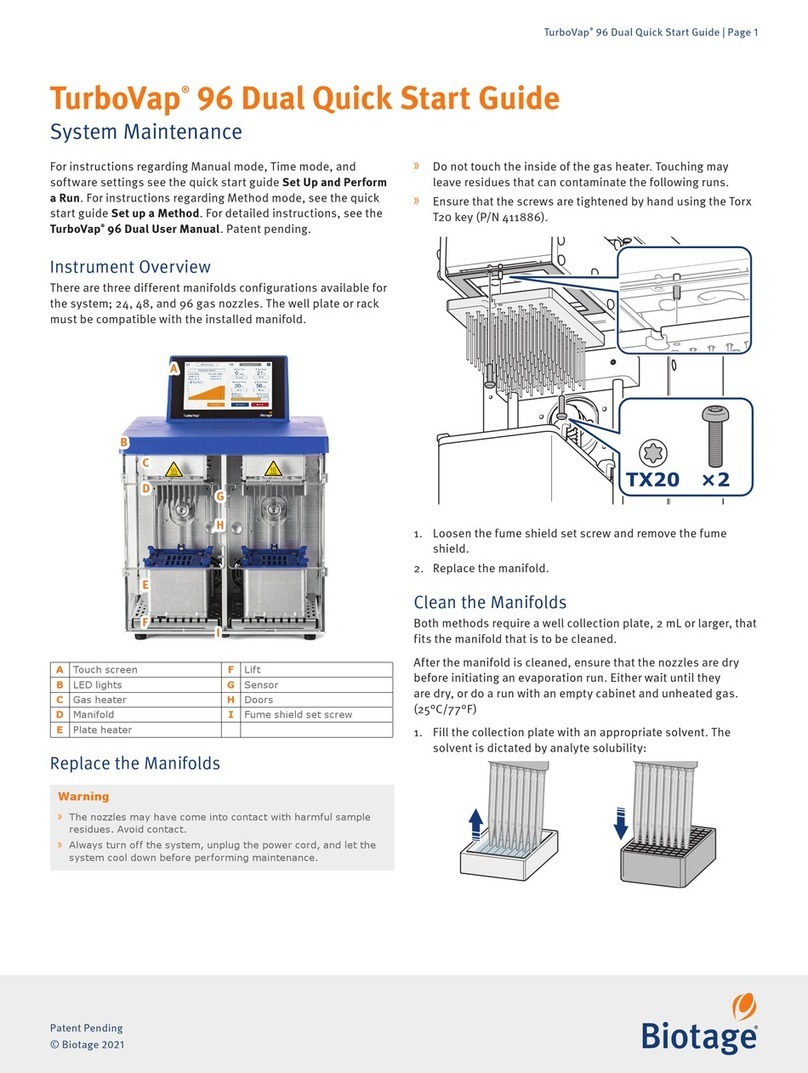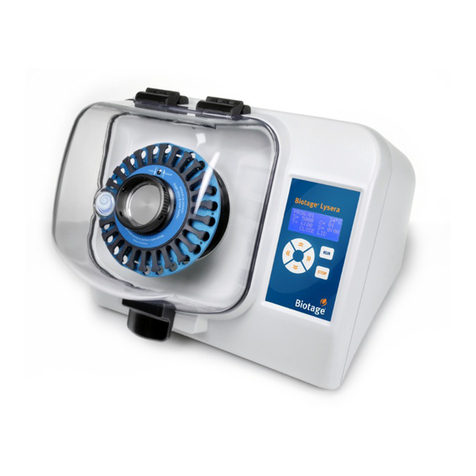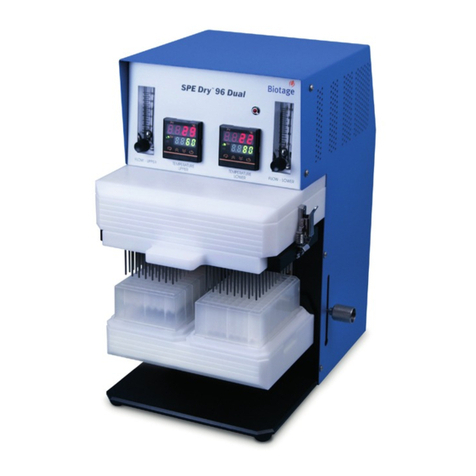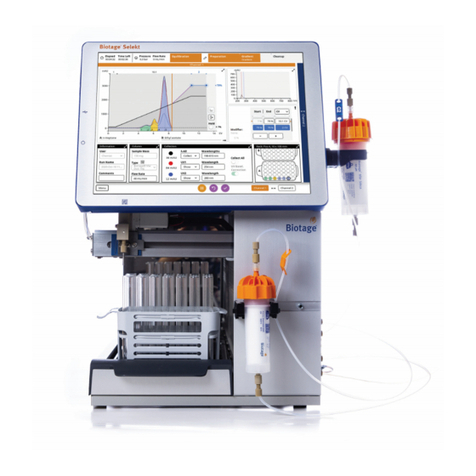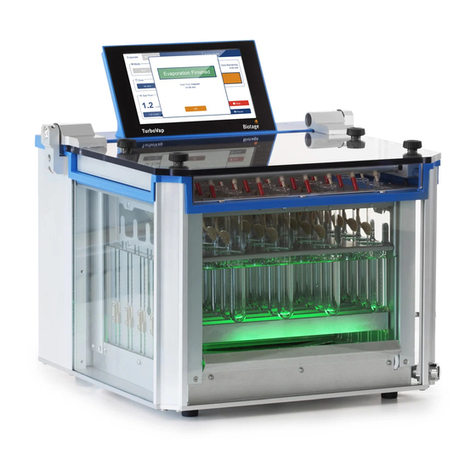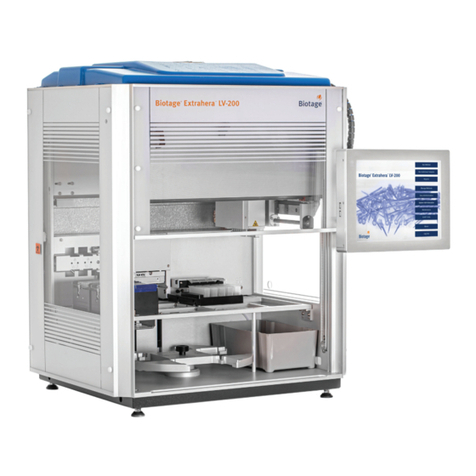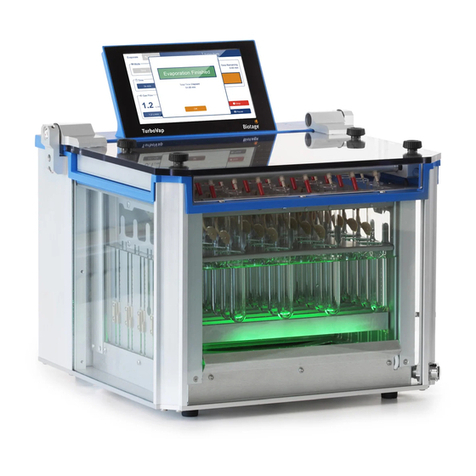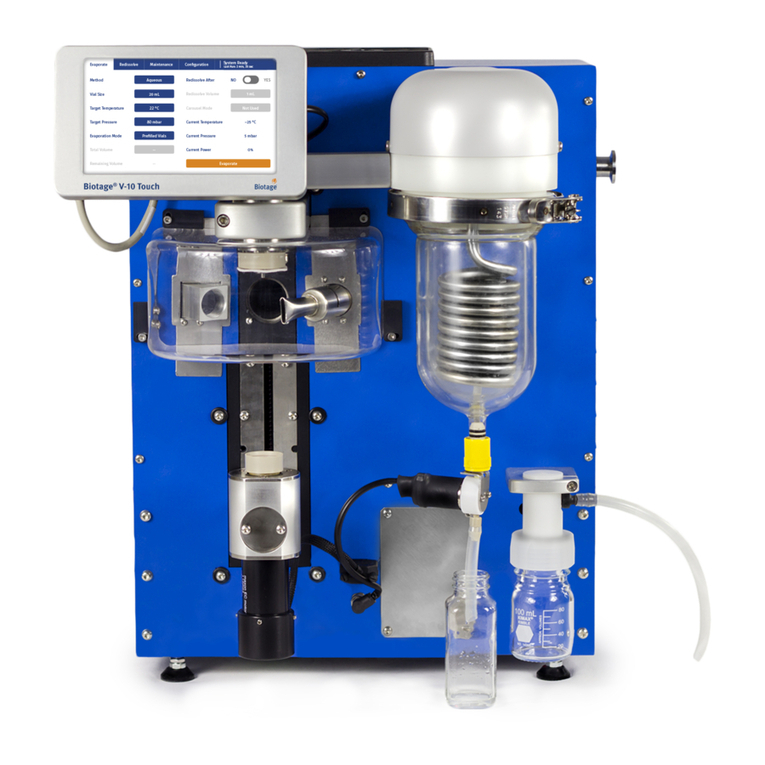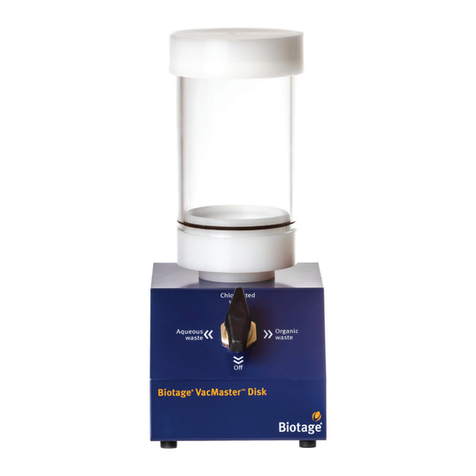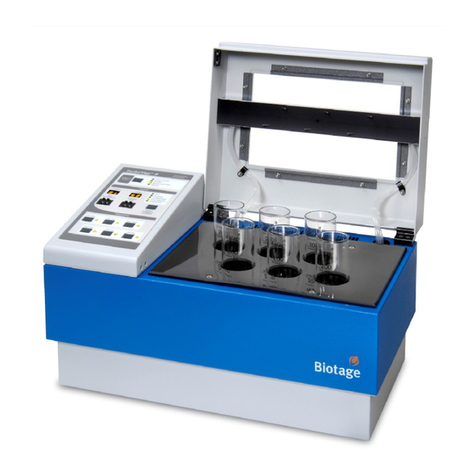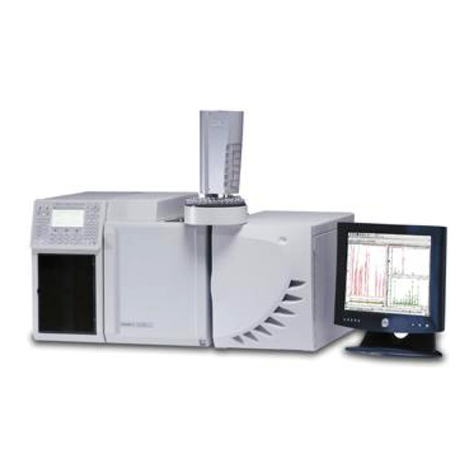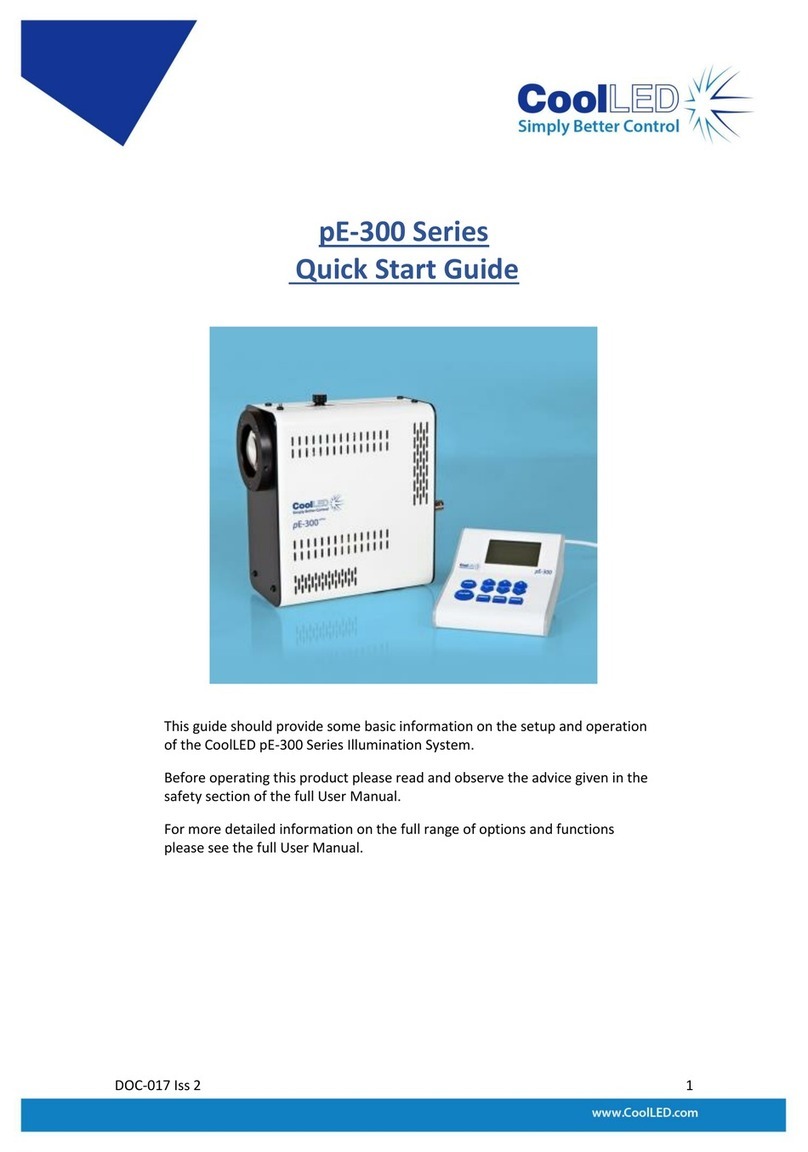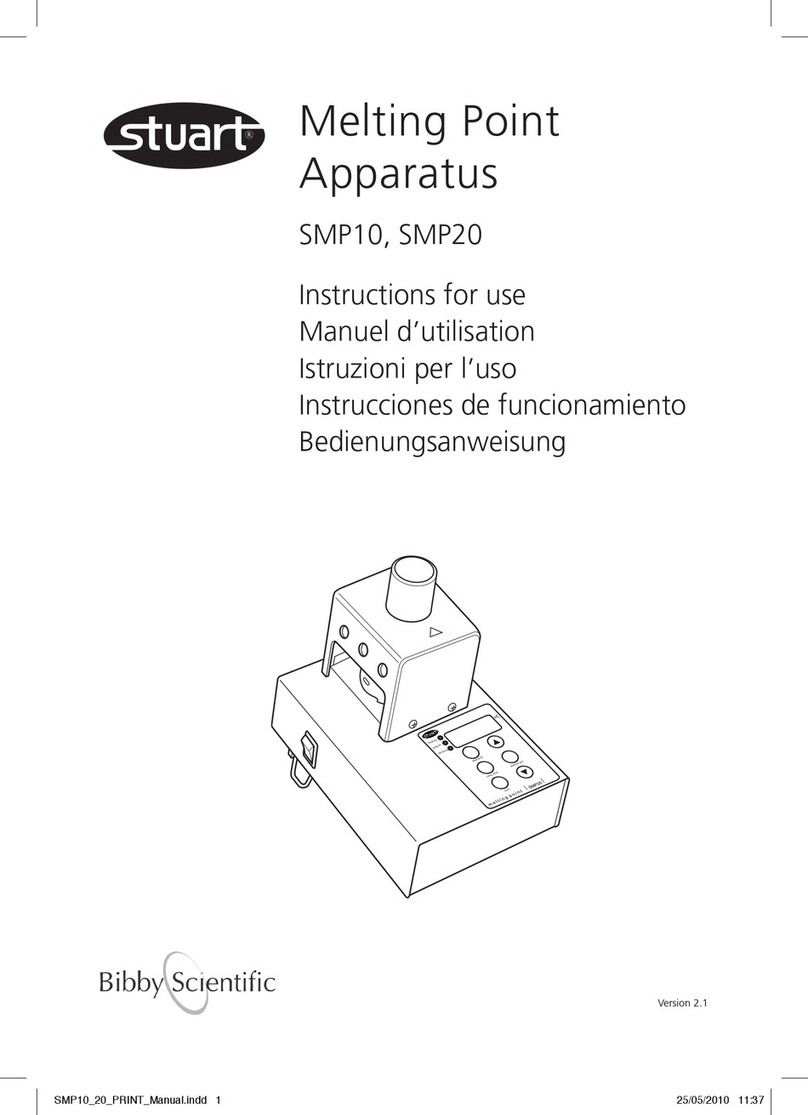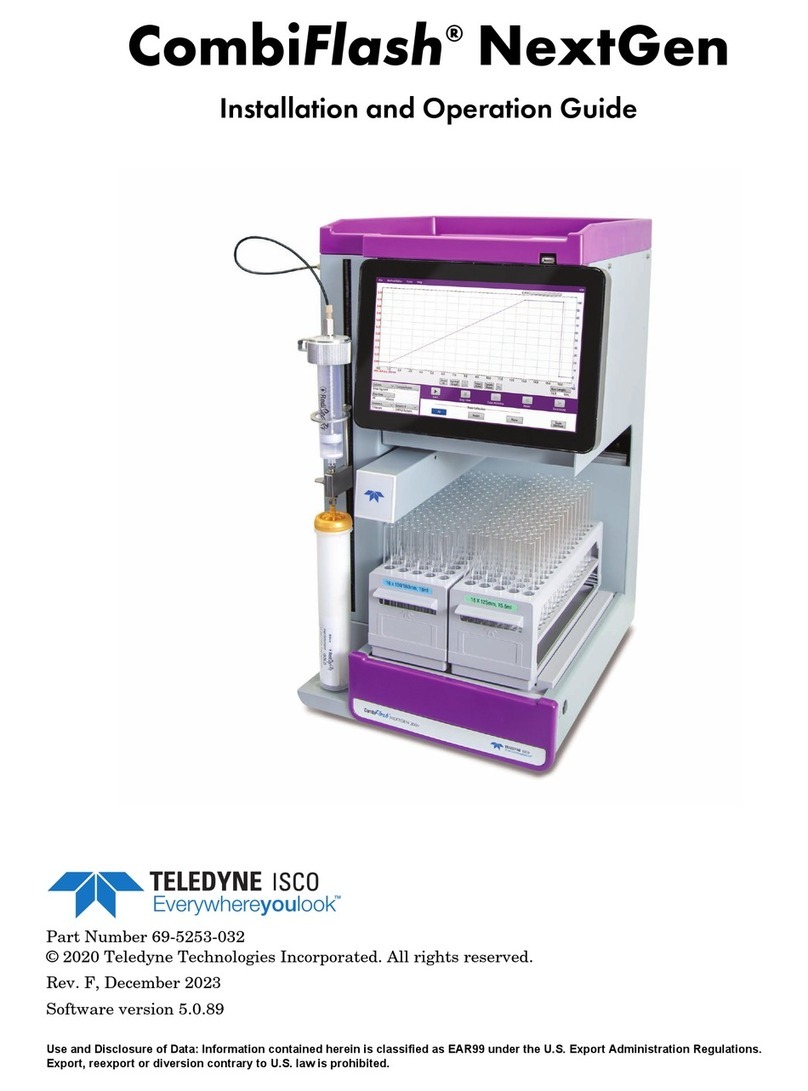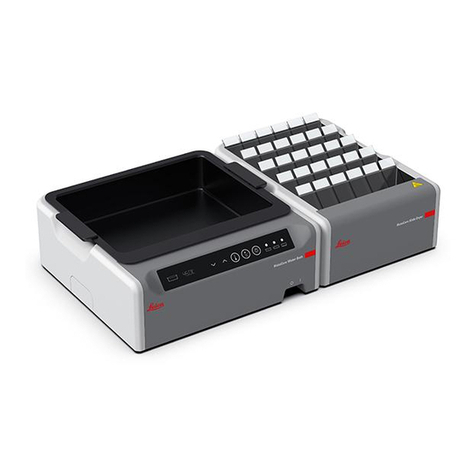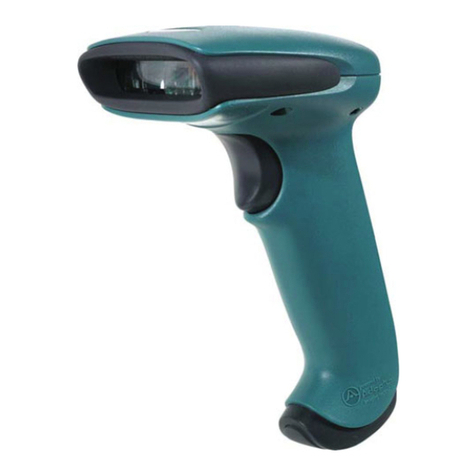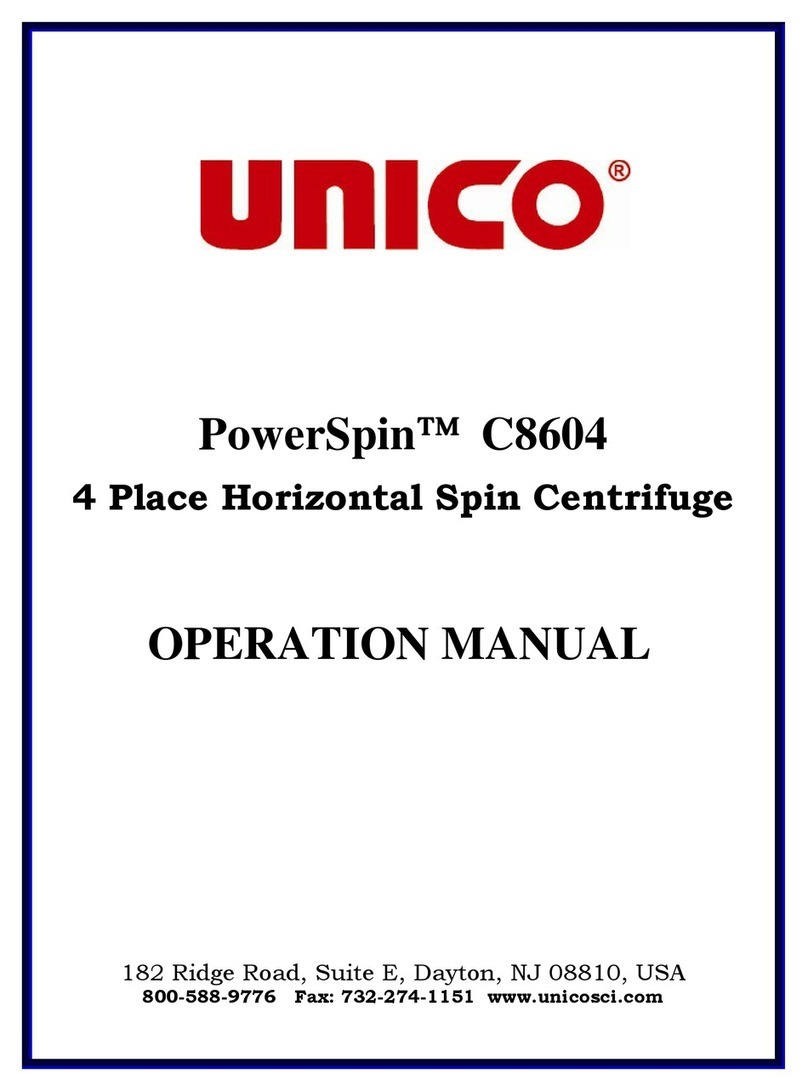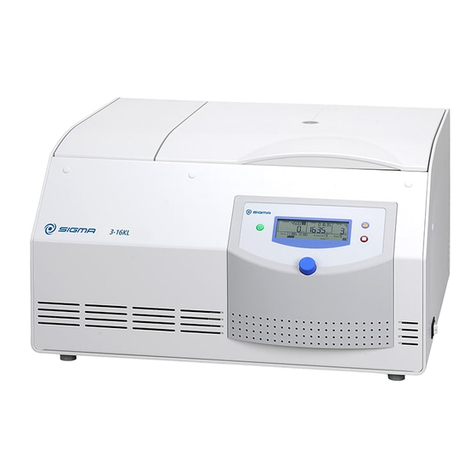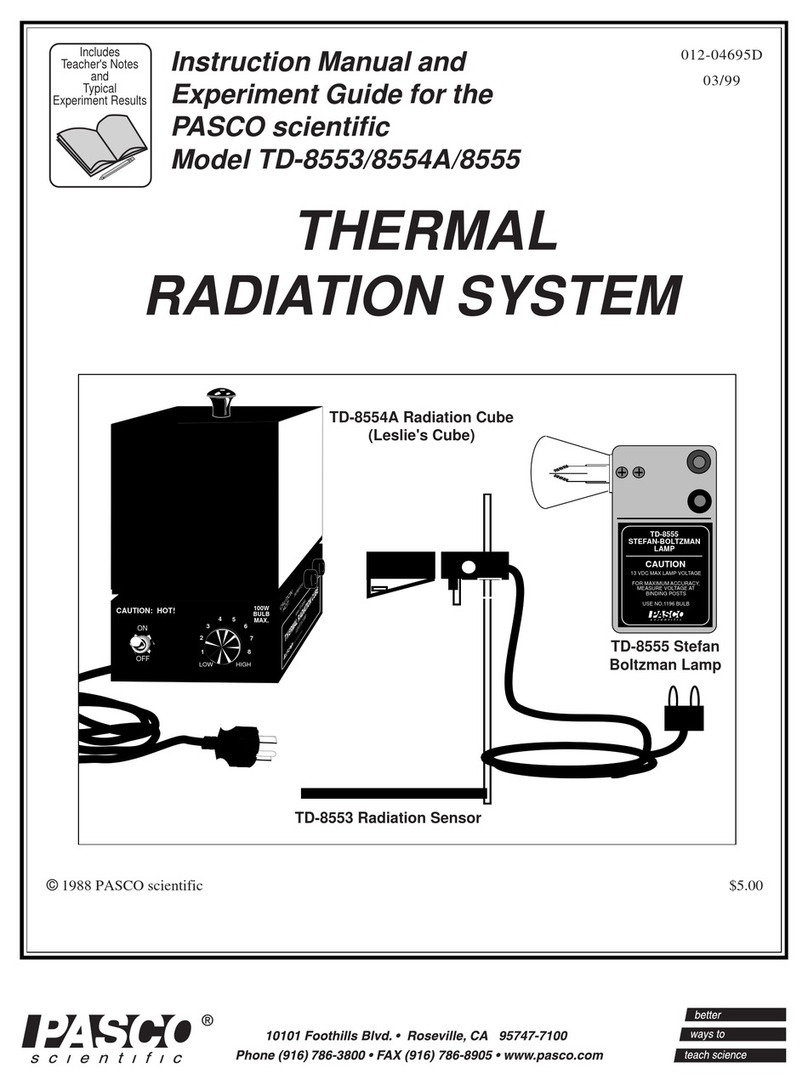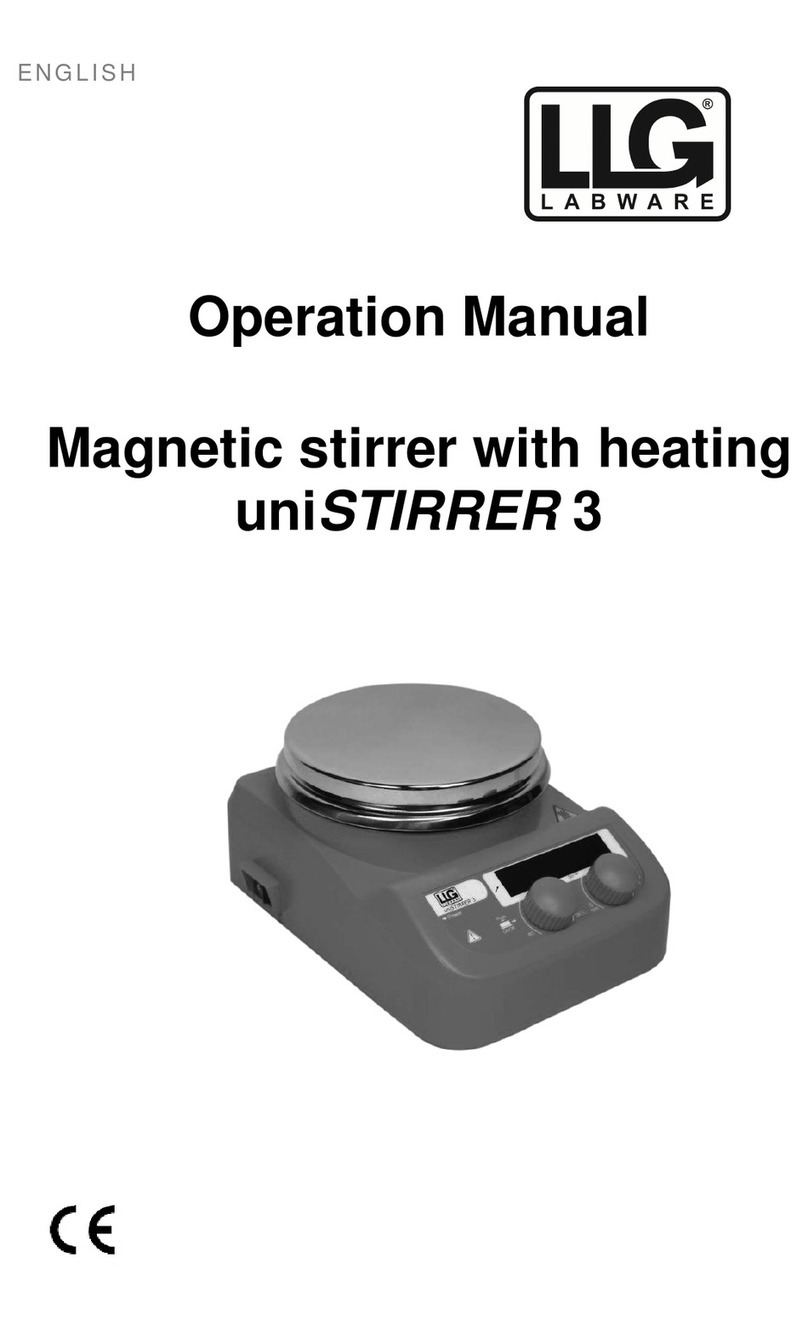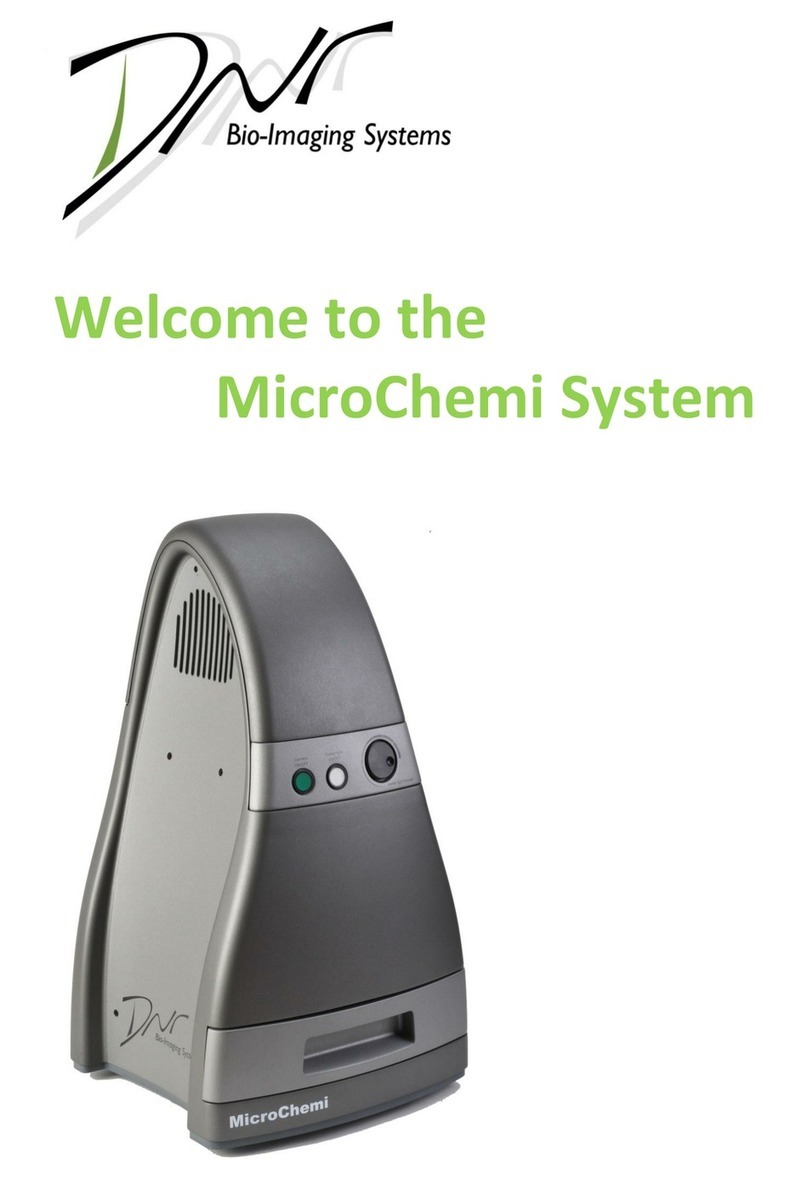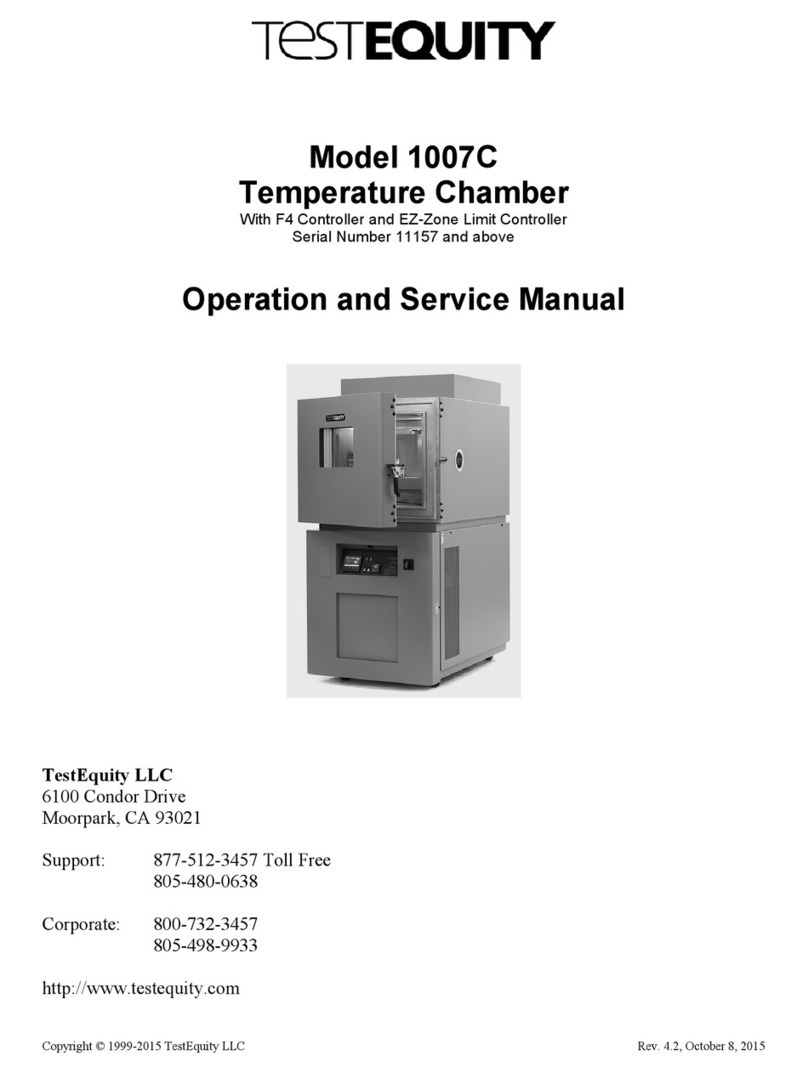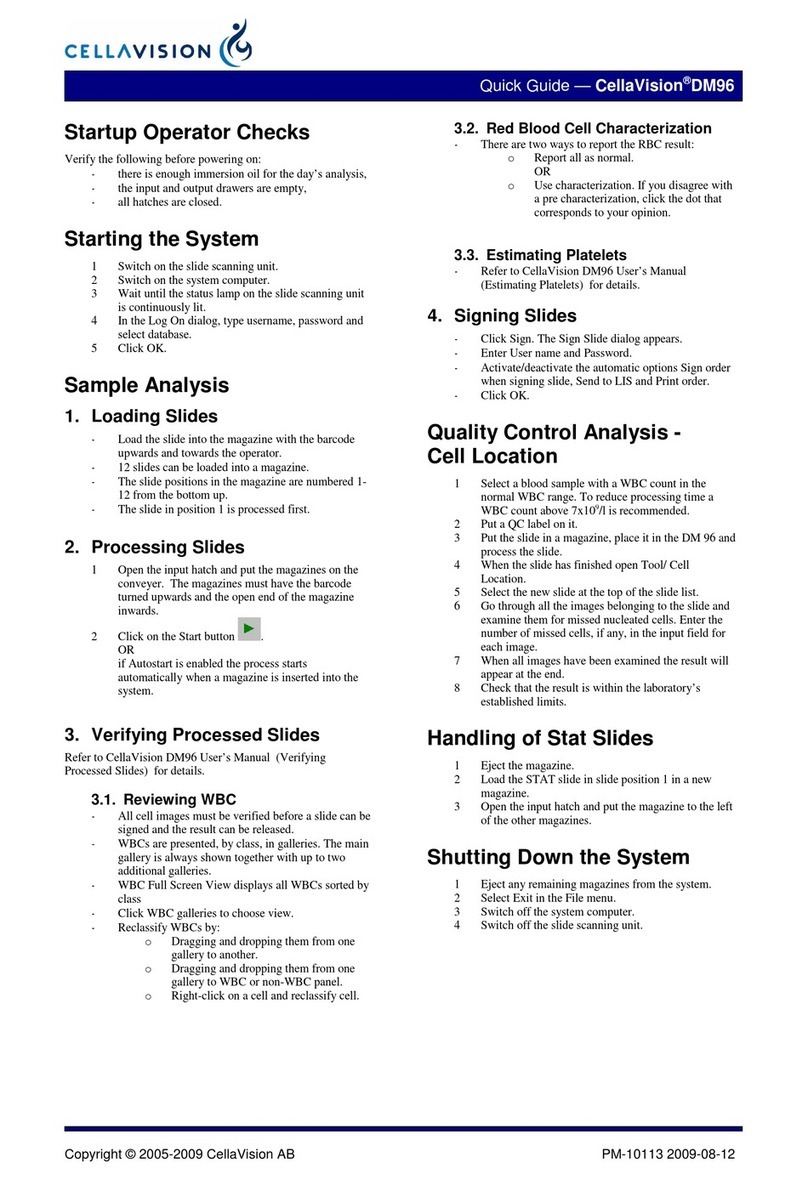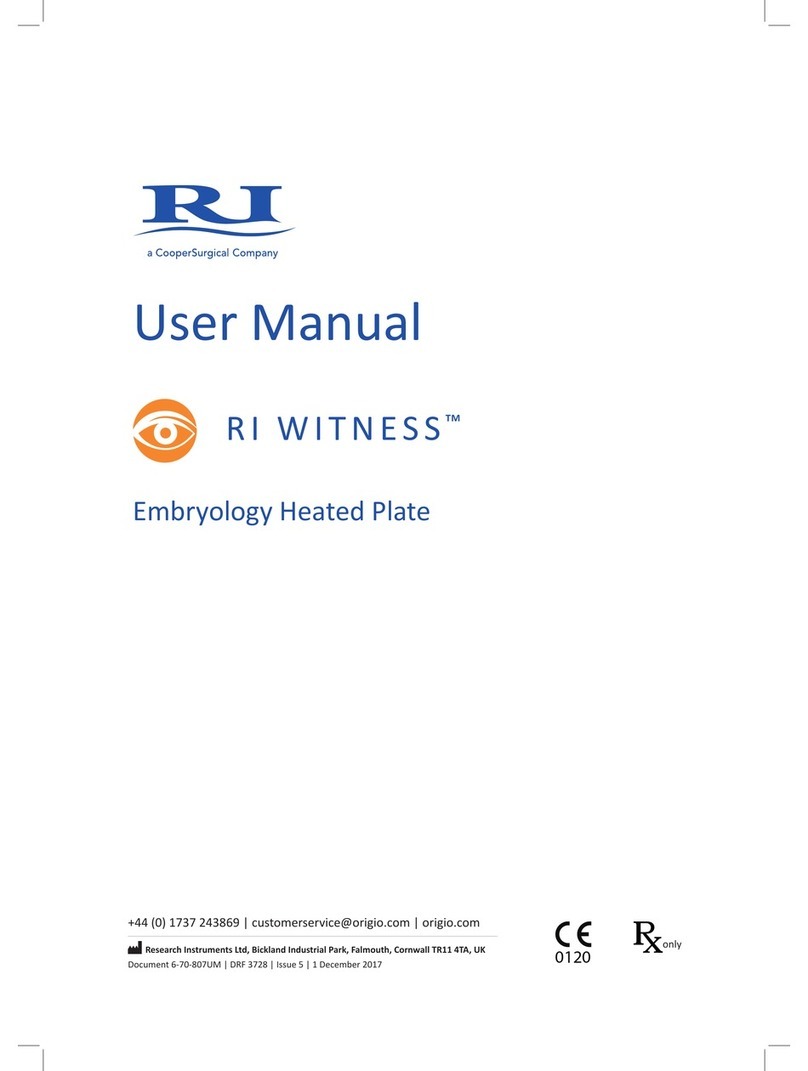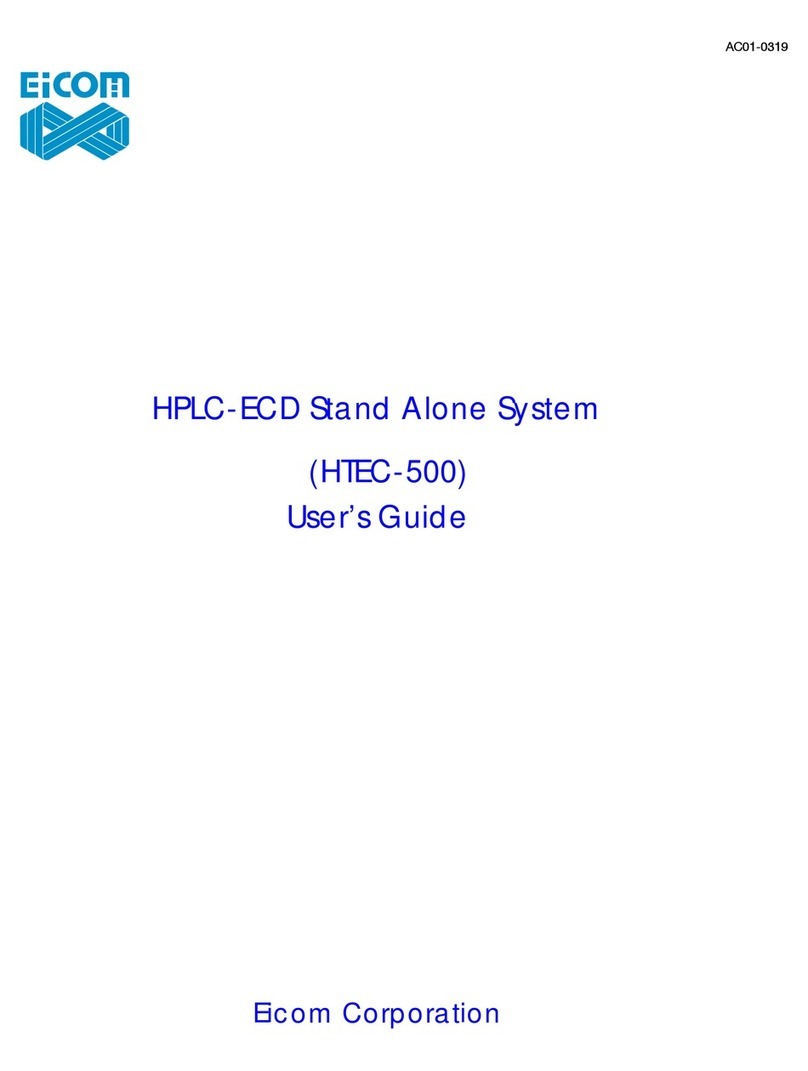
TurboVap®Installation and Safety | © Biotage 2017
Safety
Installation
»
The system must be unpacked and installed
as described in this document.
»
Follow regional safety practices when handling
and moving shipping boxes and containers,
and when moving the system.
»
The total weight of the package including the
system is 20 kg (44 lbs). Use suitable lifting
equipment when moving the package.
»
The system consists partly of glass. Exercise caution
when unpacking the system. If glass was broken during
transportation, please contact Biotage 1-Point Support.
»
The system must be either connected to a ventilation
system using the exhaust outlet at the rear of the system
or placed in a well-ventilated fume hood or an equivalent
enclosure to reduce the risk of exposure to harmful
solvent vapors. The ventilation system or fume hood
must be capable of exhausting 1 m3/min (35.3 ft3/min).
»
Use only an exhaust hose supplied by Biotage. To avoid
excessive pressure drop, it is important to use an exhaust
hose with the appropriate length and internal diameter.
»
Do not connect the system to an electrical supply that is not
in accordance with the system’s electrical specifications;
see the rating plate located at the rear of the system.
»
To avoid the risk of fire or electrical shock, the system must
be electrically grounded (earthed). Use only a power cord
supplied by Biotage. The plug should only be connected
to a grounded outlet as per local and national regulations.
Keep the mains plug easily accessible in case the system
needs to be disconnected quickly from mains power.
»
Ensure that the voltage selector switch on the right
side of the system is set to the correct voltage.
»
To avoid injury to yourself or damage to the
system, do not exceed the maximum inlet
pressure of 9 bar (0.9 MPa, 130 PSI).
»
Always connect inert gas such as nitrogen to the gas inlet.
»
Ensure that the power cord and any cables, hoses,
and tubing connected to the system cannot come
in contact with chemicals. Corrosives and solvents
can degrade the cord/cable insulation and dissolve
the hoses and tubing. There is a risk of electric
shock, fire, and/or equipment damage.
»
Do not place any equipment or bottles
on top of or above the system.
»
External fire protection should be installed according to
local regulations for equipment operating unattended.
Operation
»
Use the system only for its intended purpose, as described
in the user documentation delivered with the system and
user documentation available at www.biotage.com. If
the system is used in a manner not specified by Biotage,
the safety features of the system may be impaired.
»
The temperature of the water bath and the drain
connector can be up to 90°C. Avoid contact.
»
Always ensure that the drain tube is inserted into a
waste container of a suitable size before connecting
the drain tube to the system’s drain port.
»
Do not operate the system without water in the water bath.
»
Never operate a damaged system.
»
When using flammable solvents, read and follow
your local static discharge codes of practice and
available national recommended procedures for the
avoidance of hazards due to static electricity.
»
If not in contradiction with your local practices and procedures,
wear antistatic protective clothing and footwear, or stand on
an anti-static floor mat when using flammable solvents. If you
cannot take the usual anti-static measures, touch a grounded
metal object before opening the lid on the system to discharge
any static electricity that may have accumulated on your body.
»
The nozzles have sharp edges and may have come into
contact with harmful sample residues. Avoid contact.
»
If spilling sample or solvent into the water bath, immediately
clean the water bath as described in the user manual.
»
Exhaust solvent vapors exiting the system may be
hazardous and can contaminate the surrounding air.
Maintain proper ventilation and consult the safety
data sheets (SDS) for all of the solvents used.
»
The system operates using electricity, which can
introduce additional hazards with certain solvents
if not properly connected, vented, or set up with
recommended manufacturer approved settings.
»
Follow all generally-accepted lab safety procedures
and applicable laws and regulations.
»
Always follow local and national safety
regulations related to storage, handling and
disposal of chemicals, samples and waste.
»
Read and understand the safety data sheet (SDS) provided by
the chemical manufacturer before storing, handling, working
with, or disposing of any chemical or hazardous substance.
»
Personnel working with or near the system must wear
protective clothing, safety gear, and eye protection that
comply with local and national safety regulations.




















